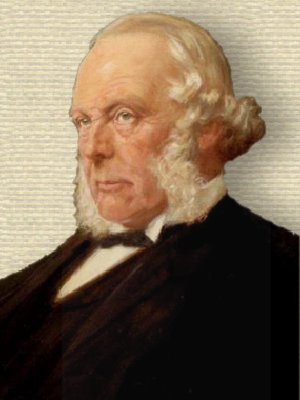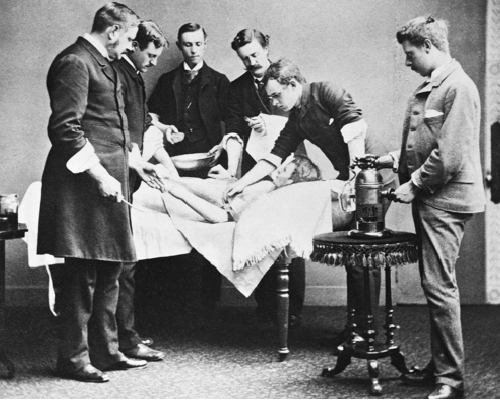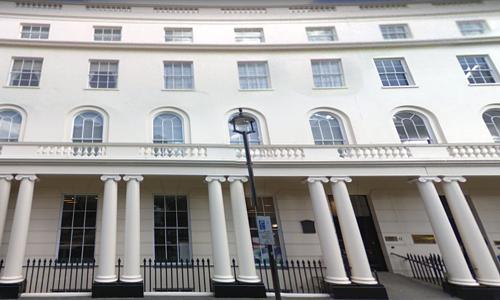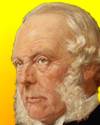 (source)
(source)
|
Lord Joseph Lister
(5 Apr 1827 - 10 Feb 1912)
English surgeon and medical scientist.
|
LORD LISTER.
by John Vaughan
from The Fortnightly Review (1918)
[p.353] Six years and more have gone by since, on February 10th, 1912, Lord Lister, who must beyond question be regarded as among the greatest benefactors of the human race, passed away, in the silent retirement of old age, at the Cinque Port of Walmer, in Kent. We have now been presented with an “authentic” account of his career, written by his nephew, Sir Rickman J. Godlee, Bart., President of the Royal College of Surgeons in 1913, who for many years was intimately associated with the great surgeon and scientist in the application of those antiseptic principles which have revolutionized the entire realm of surgery. Like many other distinguished men, it was Lord Lister’s desire, which he expressed more than once in conversation, that no biography of an intimate character might be written of him; and this wish, regarded as a sacred trust, has considerably hampered his biographer in exhibiting such a picture of his famous relative as many persons would not unnaturally desire to possess. In spite, however, of the limitations imposed upon him, it will be generally allowed that Sir Rickman Godlee’s biography of Lord Lister is one of the most fascinating volumes, alike for members of the medical profession and for the general reader, which has appeared in this country since the beginning of the war.
Joseph Lister, who came of a sturdy Quaker stock, was born at Upton House, a fine old Queen Anne mansion, at Upton, in Essex, in the year 1827. His father, Joseph Jackson Lister, like many members of the Society of Friends, was in business, and, like not a few of them, a man of remarkable intellectual attainments. He had gained indeed a wide reputation for his discoveries in the field of optics, which led to the production of the “achromatic lens” and the perfection of the modern microscope. This work gained for him a Fellowship of the Royal Society and a large acquaintance among leading scientific men. His family, consisting of four sons and three daughters, was brought up in a wholesome atmosphere of sober and practical religion, entirely free from superstition, and the young people were taught that life was a gift to be employed for the honor of God and the good of one’s fellow-men. Natural history pursuits were specially encouraged, and many [p.354] botanical and ornithological excursions were taken in Hainault Forest and Epping Forest and in the Barking marshes.
As quite a small boy Joseph Lister had expressed his desire to be a surgeon, and many of his early efforts show a leaning in the same direction. Among his school essays which have been preserved are several, beautifully illustrated with pen and wash drawings, on such subjects as “Osteology” and “The Similarity of Structure between a Monkey and a Man.” At school, too, he found recreation in macerating bones and in dissecting birds and small animals. At first his father did not encourage the idea of being a surgeon, for no Lister had ever dreamed of embarking on a professional career. But as the boy’s bent became more pronounced, no obstacle was placed in the way, and it became recognized in the family that Joseph was to be a surgeon.
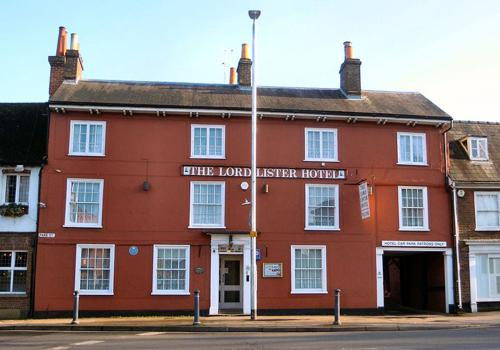
So at the age of seventeen Lister left school and went up to University College, London. The first three years were occupied in taking the degree of B.A. Then, unfortunately, he had an attack of smallpox, followed by a nervous breakdown, which necessitated a long holiday. While he was traveling in Ireland and the depression of spirits had almost passed away, his father wrote him a sympathetic letter, of which the following wise sentences may be quoted: “And, believe us, my tenderly beloved son, that thy proper part now is to cherish a pious cheerful spirit, open to see and to enjoy the bounties and the beauties spread around us; not to give way to turning thy thoughts upon thyself, nor even at present to dwell long on serious things. ... Do not consider thyself required to answer this, which contains some things I should not generally advert to.” On recovering his usual health Lister entered with zeal and energy into his medical studies, under several teachers of acknowledged eminence. His career was one of exceptional brilliance. Gold medals and other distinctions, both at the College and the University, were bestowed upon him; while during the latter part of his studentship he did some remarkable original work, both microscopical and experimental.
With the acquisition of the M. B. degree of the University of London and the Fellowship of the Royal College of Surgeons, in 1852 Lister’s long studentship of nine years at University College came to a close. After a brief period of relaxation we find him at Edinburgh, where he was warmly welcomed by Mr. Syme, Professor of Clinical Surgery in the University, and probably the most original and successful operator of the day. Syme’s friendship was a source of considerable advantage to Lister, who before long be came his resident house surgeon, and was, moreover, admitted to the charmed home circle at Millbank, Syme’s private residence at Morningside. There he came in contact with many distinguished visitors, including Dr. John Brown, the author of Rab and His Friends, and other notable persons. For Lister, however, the happiest result of his close friendship with his chief was the mutual attachment which before long sprang up between himself and Syme’s eldest daughter, Agnes. The pair were married in the drawing room at Millbank, after the Scotch fashion, on April 24th, 1856, and a career of unruffled domestic happiness began, which only terminated thirty-seven years later, when Lady Lister died of pneumonia in Italy. One result of his marriage was that Lister resigned his membership of the Society of Friends. It was against the rule of the Quakers to “marry out of the Society”; and Lister, holding the sound and sensible opinion that “true [p.355] religion stands neither in forms nor in the formal absence of forms,” became a member of the Episcopalian Church, in which communion he found complete satisfaction.
For nearly seven years Lister remained at Edinburgh, where he attained a position of recognized eminence. He was regarded as a young surgeon of great promise, whose practice was grounded upon a broad foundation of anatomical and physiological knowledge. He was known to be a first-rate experimental investigator, the value of whose researches was already recognized beyond the limits of these islands. It was therefore with no feeling of surprise that in 1860 he was appointed by the Crown to the Regius Professorship of Surgery in the University of Glasgow. His tenure of this office was rendered memorable, not only in the annals of the University, but in the history of medicine, by his discovery in 1865 of what is known as the antiseptic treatment in surgery. Up till then the great obstacle In the way of progress was sepsis, or the inflammation which regularly followed wounds of every description. This condition was caused by micro-organisms, which at that time were not recognized as enemies, but regarded rather as microscopical curiosities. Still, a certain number of diseases were even then regarded as “septic.” Among them may specially be mentioned those which were called “hospital diseases,” such as erysipelas, pyæmia, septicæmia and hospital gangrene. These diseases were “the nightmare of operating surgeons,” and wrought havoc in the hospitals. Indeed, one distinguished surgeon declared that “a man laid on the operating table in one of our surgical hospitals is exposed to more chances of death than the English soldier on the field of Waterloo.” It was the same story in most of the large lying-in hospitals. The mortality from puerperal fever was appalling. In military practice the mortality after amputations sometimes reached the truly terrible ratio of 75 to 90 per cent. It seemed to be clear that these awful conditions were due to a polluted atmosphere, but how to improve matters was unknown. “In extreme cases,” said Sir John Ericksen in his book on Hospitalism, “there is only one remedy left, viz., the demolition of the infected fabric, and, we must add, the destruction of its materials. In fact, just as the cattle plague has to be stamped out by the pole-axe, so has the infection of a pyæmic hospital to be destroyed by the pick.”
Such was the condition of things when in 1865 Lister began to put into practice his antiseptic treatment. For some time past his mind had been occupied with the subject. He had learned from Pasteur’s writings that putrefaction was in fact a fermentation, and that it was caused by minute microscopical beings, which were carried far and wide by dust floating in the air, and, further, that it was possible to free the air of this dust by filtration, or heat, or by other means. This was, indeed, a startling revelation. If it were true the mystery of wound-infection would be cleared up. The pestilence that walketh in darkness would be overcome. It was the air that started the mischief, but not the air itself. The air was only the vehicle which conveyed the micro-organisms, the germs of putrefaction, to the wound. Hence successful wound treatment would no longer consist in employing antiseptic substances after putrefaction had set in, as had often been done in the past, but in purifying the air before it gained access to the wound, so that putrefaction should never be allowed to take place. If this condition could be achieved suppuration would be done away with, and hospital diseases would be banished at the same time. This [p.356] was the principle upon which Lister’s antiseptic system of surgery was based. It was an effort to prevent the occurrence of putrefaction in wounds at all. It was an endeavor to introduce a new system of surgery by eliminating decomposition altogether, that is, a true aseptic surgery; and if he had, says Sir Rickman Godlee, “from the first adopted the word aseptic, which appears more closely to connote his principle than the word antiseptic, some misunderstandings of later years would never have arisen.”
The question that now confronted Lister was how the putrefaction of wounds was to be prevented. The cause of putrefaction was clear. It was due to the presence of micro-organisms in the air. How, then, was the air to be eliminated of germs? Of the three methods available—heat, filtration and treatment by a chemical antiseptic—Lister chose the last. And, looking round for a suitable antiseptic, he remembered that in dealing with the sewage at Carlisle carbolic acid had been used as a disinfectant with striking results. He determined therefore on the use of carbolic acid dressings. The first occasion on which he tried them was in the treatment of a compound fracture in March, 1865. The result was so startling that he contemplated publishing the case at once. But other cases followed in quick succession, each suggesting modifications and improvements, and, indeed, developments of the same treatment. The epoch-making articles which recorded Lister’s first observations on the antiseptic system of surgery appeared in the Lancet between March and July, 1867, and were quickly followed by a paper on the same subject read before the British Medical Association at Dublin. In that paper he concluded as follows: “Since the antiseptic treatment has been brought into full operation, and wounds and abscesses no longer poison the atmosphere with putrid exhalations, my wards, though in other respects under precisely the same circumstances as before, have completely changed their character; so that during the last nine months not a single case of pyaemia, hospital gangrene or erysipelas has occurred in them.” Under these altered conditions Lister was able to write to his father a few months later: “I now perform an operation for the removal of a tumor, etc., with a totally different feeling from what I used to have; in fact, surgery is becoming a different thing altogether.”
The reception given to Lister’s antiseptic doctrine reminds the layman that there is such a thing as the odium medicum as well as the odium theologicum. While the Lancet had an appreciative article in which the importance of the discovery was fully recognized, it was, on the other hand, opposed with singular bitterness in many quarters. Among Lister’s most virulent antagonists was Sir James Simpson, the discoverer of chloroform, who attacked the antiseptic system and its inventor with prolonged and consistent animosity. In the same camp were mostly to be found the senior surgeons, who disliked change, and who clung to the old methods of treatment. If, for decency’s sake, the new system had to be given a trial, it was done in a half-hearted, perfunctory manner. It involved, beyond question, considerable difficulties; and it is no wonder that the seniors, almost without exception, failed to obtain Lister’s results. “Their failures caused them little sorrow, but rather the satisfactory feeling that, after all, this new doctrine had nothing whatever in it, and that they had not all their lives been following cunningly-devised fables.” It is, however, disappointing to find that many able and open-minded men, like Sir John Ericksen and Sir James Paget, failed [p.357] at first to grasp Lister’s fundamental idea. In London, especially, the opposition was pronounced. To mention antiseptic surgery, we are told, was to cause irritation, or at least to elicit a scoff or a sneer; and “Lister’s name became to London surgeons like that of Aristides the Just to the Athenians.” On the Continent the reception given to the new treatment was on the whole more favorable. While in some countries it was received with the apathy or opposition experienced at home, the Swiss, Danish and German surgeons at once recognized its value. As early as 1867 it was employed in his hospital at Leipzig by Professor Thiersch; and von Volkmann, of Halle, quickly became “Lister’s most devoted disciple.” Ernst von Bergmann, well known to Englishmen in connection with the illness of the Emperor Frederick, also adopted the treatment, and set up in his hospital “a system of antiseptic drill, worked out to the minutest details, in opposition to the old beloved habits, with the rigor and pedantry of a military course of instruction.” It must be remembered that the influence of the German surgeons was at that time undoubtedly great, and “to some extent the rest of the world waited to hear what their verdict on the antiseptic treatment would be.”
In the year 1869 Lister had succeeded his father-in-law, Mr. Syme, in the chair of Clinical Surgery at Edinburgh. Within a month of his appointment, his aged father passed away at Upton; and the long and intimate correspondence between father and son came to a close. The few extracts, which Sir Rickman Godlee has allowed himself to give, indicate here and there, though very faintly, the depth of the affection that existed between them. Nothing but Lister’s expressed wishes, adds Sir Rickman, “has prevented the insertion of others of which there are very many, which would have shown how much they leaned each on the other for support in worldly matters, in questions requiring judgment, and in spiritual things.” After a few years’ work at Edinburgh, an opportunity arose of fulfilling what had been with Lister a lifelong desire; viz., a Hospital appointment in London. More than once expectations had been raised in that direction, only to meet with disappointment. So he had steadfastly continued his work in Scotland, teaching his huge classes, instructing the many foreign surgeons who visited his clinic, and working out the details of the antiseptic treatment. Lister was now in his fiftieth year, when Sir William Fergusson, Professor of Clinical Surgery at King’s College, London, died. The number of medical students at King’s College was at that time very small; and it is not surprising that the council should have thought of retrieving their fortunes by inviting some surgeon of acknowledged distinction to take Sir William Fergusson’s place. Lister was approached upon the matter; but the negotiations seemed likely to fall through. At length, however, his conditions were accepted, and he was duly elected to the chair of Clinical Surgery on June 18th, 1877. So much to the surprise of many persons, who had come to identify Lister with Edinburgh, he left his splendid field of work in the northern capital—the large Infirmary, the unrivaled class of enthusiastic students, and the settled affection of his Scottish friends—in order to take up a secondary position in a comparatively small London hospital, where the average annual entry of medical students was less than 25, whereas that in the University of Edinburgh was over 180. But Lister was now “a man with a mission.” The antiseptic treatment had by this time been accepted in almost every part of the world, except London, where alone it made but little way. The importance [p.358] of converting the greatest center of learning and education in England justified almost any sacrifice, and it seemed as if the only way of convincing Londoners was to let them see how he actually carried out the treatment himself, and the results he was able to obtain.
Before the year was over Lister and his wife had established themselves in London, at No. 12 Park Crescent, close to the Botanical Gardens, which afforded a secluded spot for purposes of meditation. Close by he opened a private nursing home, an institution at that time almost unknown in London. For years his patients occupied the greater number of its rooms, and his morning visit there was part of the ordinary daily round. At King’s College he had to encounter many difficulties. He had, however, stipulated with the Medical Committee that he should be allowed to bring with him from Edinburgh four men whom he had himself trained to form the nucleus of his staff at the hospital. Among them was Watson Cheyne, now Sir Watson Cheyne, senior surgeon to King’s College Hospital, who became his house surgeon. Without such assistance it would have been almost impossible to plant the antiseptic system in the uncongenial soil which was the best that King’s College Hospital was able to offer him. There was, too, a good deal of friction to overcome, especially in connection with the nursing department, which unfortunately was in the hands of a sisterhood. The lack of sympathy and of enthusiasm among the sisters was to Lister a new experience. He could hardly bring himself to believe that such a state of mind was possible. It not only created an unpleasant atmosphere in the wards, but it seriously endangered the success of his special treatment. By degrees, however, Lister’s position became more and more secure. The main principle of his system came at length to be taken for granted. The rising generation of surgeons were, for the most part, his convinced followers, and by degrees they began to fill the important posts at the great hospitals. Lister’s very pertinacity also wore down opposition. His frequent modifications of detail convinced thoughtful people that it was not the details that mattered, but the principle. Thus the Lancet, after praising in a leader the persistence with which Lister endeavored to perfect the practical details of his method of treatment, continued:
“To the unthinking it may seem strange that a ‘new’ antiseptic dressing is so often introduced to the profession, even by the founder of the system himself. But, in truth, no better evidence of the substantial soundness of the principle upon which the system rests could be adduced, and the scientific character of the asceptic system is broadly attested by the constant perfection of the details, and by its almost daily development.”
For fifteen years Lister occupied the chair of Clinical Surgery at King’s College. He soon, we are told, fell into the usual habit of the London consulting surgeon, “with early private operations, morning consultations at home, afternoon hospital visits, and occasional attendance at Societies’ meetings in the evening.” He not unnaturally became on terms of friendly intimacy with most of the best known surgeons and physicians of the day— Jenner, Gull, Paget, Ericksen, Andrew Clark, Broadbent, Thomas Smith and many others. Honors were showered upon him. Since the year 1870 he had been Surgeon-in-Ordinary to Queen Victoria in Scotland, having succeeded Syme in that office: soon after he came to London he was appointed Surgeon-in-Ordinary to Her Majesty in England, on the death of Mr. John Hilton. In the year 1880 he received the degree [p.359] of LL.D. from the University of Cambridge, and also the D.C.L. Oxon., the latter in company with Fawcett, Millais and Watts. Foreign distinctions, too, were bestowed upon him in abundance. In 1883 he became a baronet, in spite of his well-known views on vivisection; and some years later, on the occasion of Queen Victoria’s second Jubilee, he was raised to the peerage.
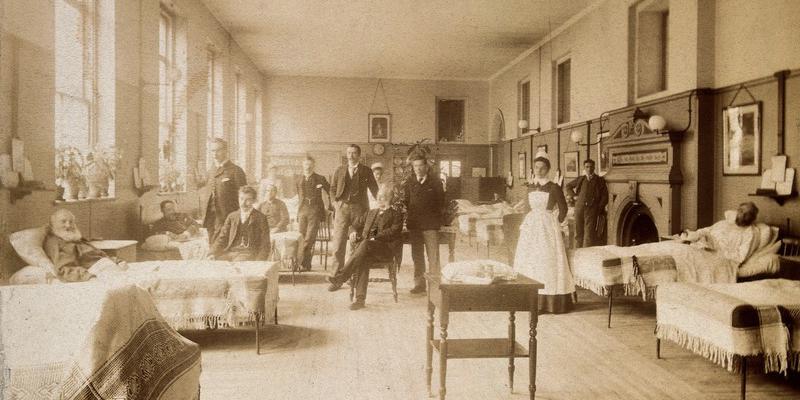
Wellcome Collection. CC by 4.0) (source)
The retiring age for the Professors of King’s College is sixty-five, and in 1892 the “melancholy hour” struck for Lister; and at the end of July he delivered his last clinical lecture to the students. At the request, however, of the Council, he continued in charge of his wards for another year. This enabled him to continue his private practice for the same period, for he had always determined, Sir Rickman tells us, that “for him it would be right to give up private practice when he no longer had such opportunities of constant operating and gaining new experience as, for probably the majority of surgeons, are only afforded by the charge of wards in a hospital.
In the year of his retirement a crushing blow overtook Lister. The usual spring holiday was being spent on the Italian Riviera, when they were staying at Rapallo, botanizing as usual, and thoroughly enjoying themselves. One morning after breakfast, as they were changing the drying papers of some botanical specimens, Lady Lister had an attack of shivering. It was the precursor of acute pneumonia, which developed with alarming rapidity, and in four days Lady Lister was dead. The shock to Lister was terrible. As they had no children, she had been his almost daily companion for thirty-seven years, “sharing all his joys and anxieties, exulting in his triumphs and watching over him with almost a mother’s care.” Their lives were intimately bound together. She entered into his scientific work with intelligent interest and shared with him his love of natural history. The ponderous “commonplace books” are mostly in her handwriting, and “only those who have been privileged to write a few pages in them can appreciate the amount of patience which was required.” Indeed, no picture of Lister’s life would be complete that did not suggest her constant presence at his side. In their early days of married life, Dr. John Brown, calling to mind a childish illness of hers which involved several days of unconsciousness, had said: “Lister is one who, I believe, will go to the very top of his profession, and as for Agnes, she was once in heaven for three or four days when she was a very little child, and she has borne the mark of it ever since.”
Henceforth, Lister was a solitary man, and the whole course of his life was changed. He was not, however, entirely alone, for his sister-in-law, Miss Syme, continued to live with him. But without the loving sympathy and encouragement of his wife he had little heart for experimental work, as the scarcity of notes in the “commonplace book” testifies. The social gatherings, too, at Park Crescent, were almost entirely given up. But Lister did not allow himself to retire altogether from public life. He undertook, almost immediately, in succession to Sir Archibald Geikie, the office of Foreign Secretary to the Royal Society, and in 1895 he became its President. He was frequently, too, called upon to lecture, and to take part in many public ceremonies. In the year 1896 he was President of the British Association, which met that year at Liverpool, on which occasion he delivered what proved to be his last great address on the subject of antiseptics. Lister’s eightieth birthday was celebrated throughout the scientific world. At home it was determined [p.360] at a large representative meeting, held in the theatre of the Royal College of Surgeons, that the occasion should be marked by the publication in book form of Lister’s numerous writings which were scattered abroad in various journals and transactions. The work, which was no sinecure, was entrusted to a committee of five, including Sir Watson Cheyne and Sir Rickman Godlee. The scheme, when communicated to Lister, came to him as a complete surprise and met with his warmest approval. It removed, moreover, a great weight from his mind. The Collected Papers appeared in June, 1909, in two sumptuous quarto volumes, published by the Clarendon Press, in fine bold type and with many reproductions of Lister’s drawings.
Lister had had a serious illness in 1903, and though eight years of life still remained to him, they were marked by the labor and sorrow of old age. As time went on he naturally became more feeble, and the last few years of his life were spent in complete retirement at Walmer, in Kent, cheered by the tender care and kindness of his sister-in-law and the occasional visits of his nephews and nieces. For some little time before his death he was unconscious, when, on February 10th, 1912, he passed almost imperceptibly away. An offer of burial in Westminster Abbey naturally followed, but Lister had left clear directions that he wished to be laid beside his wife in West Hampstead Cemetery. A public funeral service was, however, held in the Abbey, at which the Dean, Bishop Ryle, officiated, and which was attended by a crowd of representatives of distinguished Orders and Societies, alike from Great Britain and from the Continent, who had come to pay a last tribute to his memory.
In looking back upon Lister’s career, there are, apart from his lofty position in the world of science and surgery, one or two circumstances which call for recognition. He was one of those fortunate men who possessed a hobby, which rendered his holidays times of true recreation. As a boy in Essex he had shown a taste for natural history, which his father, like a wise man, had fostered and encouraged in every way. At University College, London, his interest in botany was developed and strengthened under the inspiring influence of Professor Lindley. From henceforth field botany became a favorite pursuit; and packets of pressed wild flowers were the invariable and much-prized trophies of his foreign tours. At home, too, during the brief periods of rest he sometimes allowed himself, botany and ornithology were an unfailing source of interest and delight. In conjunction with his brother Arthur, who was a distinguished naturalist, he had for some years a house at Lyme Regis, where, In the beautiful neighborhood, many happy and refreshing rambles would be taken. Swanage, too, was one of his favorite haunts, and on the glorious downs which stretch for miles above the rocky coast he would wander with his wife in search of birds and wild flowers. Sir Rickman Godlee has given us a most interesting facsimile reproduction of a page from Lister’s diary, dated April 30th. 1891, when, in company with his wife, he made an excursion from Swanage to Kimmeridge. It gives a list of twenty-four species of birds they had seen on the way, together with a sketch and description of another they could not recognize. Writing to his brother, during the same visit, he says: “We are having nice little excursions here in the afternoons. Altogether we have seen fifty-six species of birds already, not including several commoner kinds which have not turned up, and some spring migrants which have not yet come.”
[p.361] One element in Lister’s success as a surgeon was the intense pleasure he took in his work. As far back as 1853, when he was acting as house surgeon to Mr. Syme at Edinburgh, he had written to his father: “If the love of surgery is a proof of a person’s being adapted for it, then certainly I am fitted to he a surgeon; for thou can’st hardly conceive what a high degree of enjoyment I am from day to day experiencing in this bloody and butchering department of the healing art. I am more and more delighted with my profession.” And with his love of surgery was associated a deep sense of the sacredness and dignity of his calling. Writing to his father, to whom he spoke freely of the deepest things in his heart, he says: “I trust I may be enabled in the treatment of patients always to act with a single eye to their good, and therefore to the glory of our Heavenly Father. If a man is able to act in this spirit, and is favored to feel something of the sustaining love of God in his work, truly the practice of surgery is a glorious occupation.” This lofty ideal of duty he ever tried to inspire in the hearts of his students. In his inaugural address, as Regius Professor of Surgery, to the students of Glasgow, he ended his oration by insisting on the two great requisites for the medical profession: “First, a warm, loving heart; and secondly, Truth in an earnest spirit.” The memorable words with which he concluded his graduation address to the students of Edinburgh in 1876, almost demand quotation, for they contain the secret of Lister’s life. They are fitly chosen by Sir Rickman Godlee as the motto on the title page of his great biography. “If,” said Lister, “we had nothing but pecuniary rewards and worldly honors to look to, our profession would not be one to be desired. But in its practice you will find it to be attended with peculiar privileges; second to none in intense interest and pure pleasures. It is our proud office to tend the fleshly tabernacle of the immortal spirit, and our path, if rightly followed, will be guided by unfettered truth and love unfeigned. In the pursuit of this noble and holy calling I wish you all God-speed.”
- Science Quotes by Lord Joseph Lister.
- 5 Apr - short biography, births, deaths and events on date of Lister's birth.
- Germ Theory & The Antiseptic Principle, by Louis Pasteur, Joseph Lister. - book suggestion.
